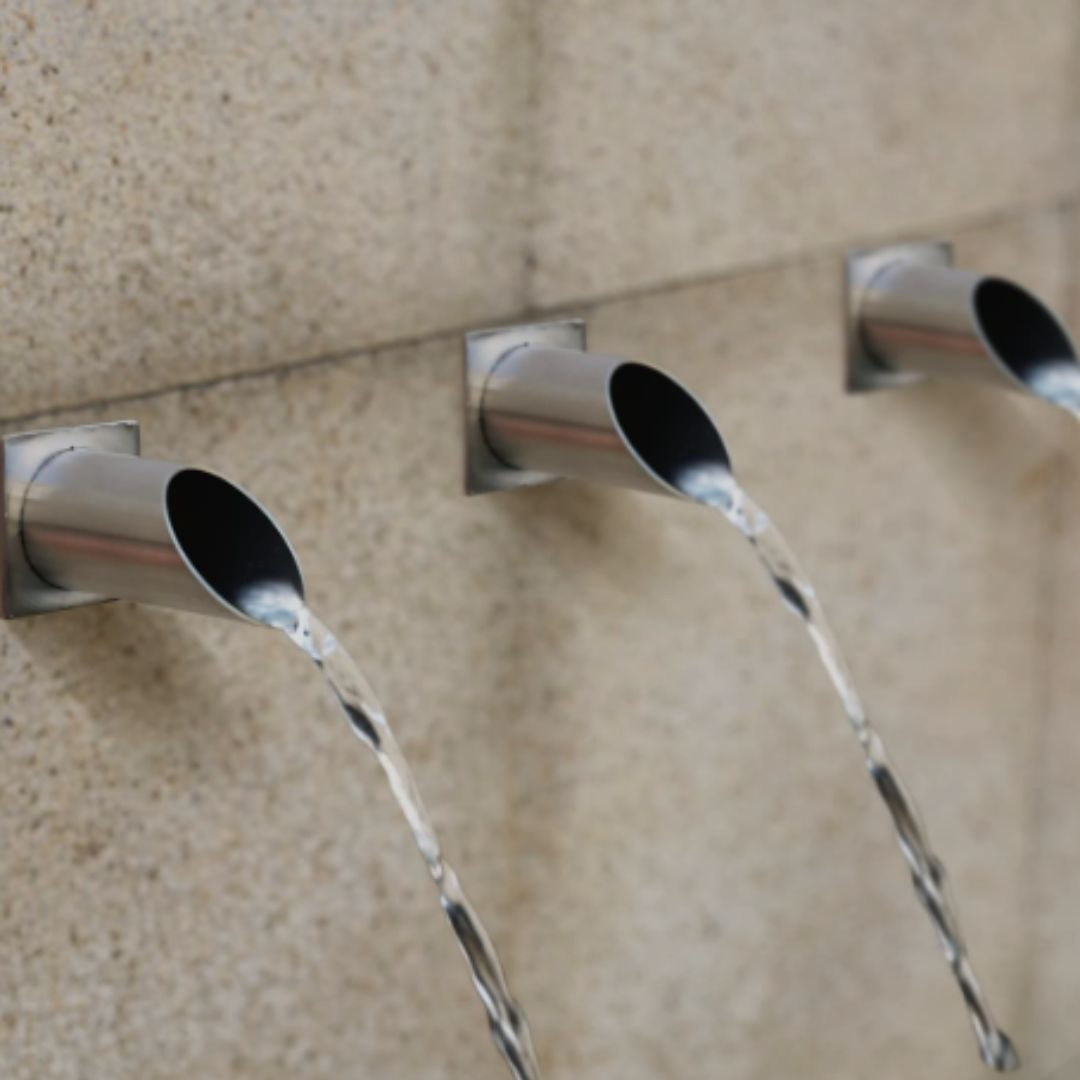
2025-03-18T11:31:54
Brass and Stainless Steel Scuppers: Elevating Designer Water Features to Art Water has been a centerpiece of landscape and architectural design since ancient times, with its flowing, reflective qualities creating both visual and auditory appeal. Today's modern water features continue this tradition, but with increasingly sophisticated design elements that transform simple water flow into artistic expressions. Among these elements, brass and stainless steel scuppers stand out as some of the most impactful and elegant components available to designers. What Are Scuppers and Spouts? Scuppers (sometimes called water spouts) are designed openings that allow water to flow from one area to another in a controlled manner. Unlike standard pipes or drains that conceal water movement, scuppers are intentionally visible components that turn the transfer of water into a design feature. They create deliberate water effects - from gentle sheets of water to dramatic arcs and streams - that become focal points in landscape and architectural installations. The Allure of Brass Scuppers Brass scuppers offer a warm, golden appearance that develops a rich patina over time. This living finish evolves with age, creating a dynamic visual element that changes gradually through the seasons and years. Material Characteristics Brass is an alloy primarily composed of copper and zinc, giving it distinctive properties that make it ideal for water features: Naturally antimicrobial properties that resist algae growth Excellent corrosion resistance, particularly in freshwater applications A warm golden hue that complements natural materials like stone and wood The ability to develop a complex, evolving patina that adds character Design Versatility Modern brass scuppers range from minimalist contemporary styles to ornate traditional designs inspired by classical architecture. Popular forms include: Linear slot scuppers that create sheet falls Lion head or grotesque face spouts reminiscent of Roman and medieval fountains Geometric rectangular or circular outlets that produce clean water streams Custom sculptural forms that serve as both water sources and artwork Stainless Steel: Modern Elegance in Water Design Stainless steel scuppers provide a sleek, contemporary alternative to brass, offering a cooler aesthetic that complements modern architectural styles. Material Advantages The composition of stainless steel (iron with chromium and other elements) provides several benefits for water features: Exceptional corrosion resistance, even in chlorinated or saltwater applications Durability in all weather conditions with minimal maintenance A consistent appearance that retains its original finish Strong resistance to staining and discoloration Contemporary Applications Stainless steel scuppers have become signatures in modern landscape design, particularly in: Clean-lined infinity edges for swimming pools and water walls Precision-cut water blades that create glass-like sheets of water Industrial-inspired water channels in urban landscapes Backlit water features where the reflective quality of the metal enhances lighting effects Design Considerations for Scupper Selection When incorporating brass or stainless steel scuppers into water features, designers must consider several factors to achieve the desired aesthetic and functional results: Water Flow Dynamics The shape, size, and position of a scupper dramatically affect how water moves through it: Wide, shallow openings create thin sheets of water Narrow slots produce faster-moving streams Circular openings can create arcing jets when properly pressurized Textured surfaces within the scupper can create rippling effects Sound Design Often overlooked but critically important is how scuppers contribute to the acoustic environment: The distance water falls affects volume and pitch The receiving surface (stone, water, metal) creates different tonal qualities Multiple scuppers can be tuned to create harmonious water music The shape of the water stream affects splashing patterns and resulting sounds Integration with Surrounding Materials The most successful scupper installations consider how these metal elements interact with adjacent materials: Brass pairs beautifully with natural stone, particularly limestone and travertine Stainless steel creates striking contrasts against dark granite or concrete Consider how water staining might affect surrounding surfaces The metal finish should complement other hardware and fixtures in the space Installation Best Practices Proper installation ensures both aesthetic appeal and long-term functionality: Water Pressure Considerations Maintaining consistent water pressure is essential for predictable water effects:

Have a question? Ask here!
Required fields are marked *